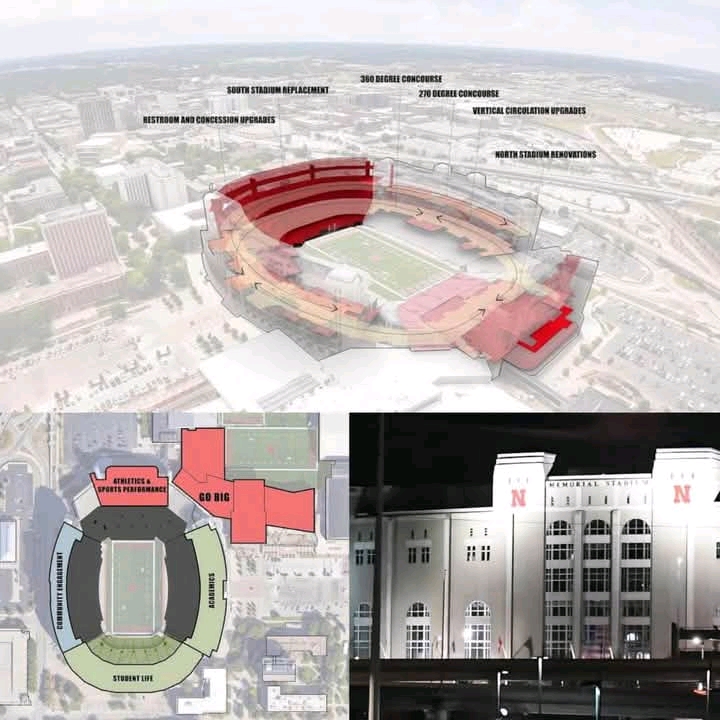Nebraska’s Memorial Stadium, a historic venue that has hosted Cornhusker football since 1923, is set to undergo a transformative $450 million renovation. Dubbed the “Go Big Project,” the initiative aims to modernize the aging stadium, enhancing the fan experience and ensuring its viability for another century.
Vision for the Renovation
The proposed upgrades include replacing bench seating with chair-back seats in the East and West Stadiums, enhancing restroom and concession facilities, and improving accessibility throughout the venue. A significant component of the project is the demolition and replacement of the South Stadium, which will introduce a multi-level grandstand featuring a new student section, premium seating areas, and expanded concourses. These changes are expected to reduce the stadium’s capacity from nearly 90,000 to approximately 75,000 seats.
Construction is slated to begin after the 2024 football season, with the South Stadium’s demolition commencing in January 2025. The entire renovation is projected to be completed by August 2026, just in time for the new football season.
Financial Considerations
Funding for the renovation is expected to come from private donations, with the university’s Board of Regents emphasizing that no public funds or tuition will be used for the project . However, the substantial investment has raised questions about financial priorities, especially as the University of Nebraska system faces a $58 million budget shortfall that threatens academic programs and faculty positions .
Community Impact and Criticism
While the renovation is anticipated to boost fan engagement and modernize the stadium, some critics argue that the focus on athletics comes at the expense of academic resources. Faculty members have expressed concerns that investing heavily in sports infrastructure sends a message that teaching and research are secondary priorities .
Despite these concerns, the renovation is seen as a strategic move to enhance the fan experience and maintain Memorial Stadium’s status as a premier college football venue. As the project moves forward, it will be essential to balance the enthusiasm for modernizing the stadium with the need to support the university’s academic mission.


